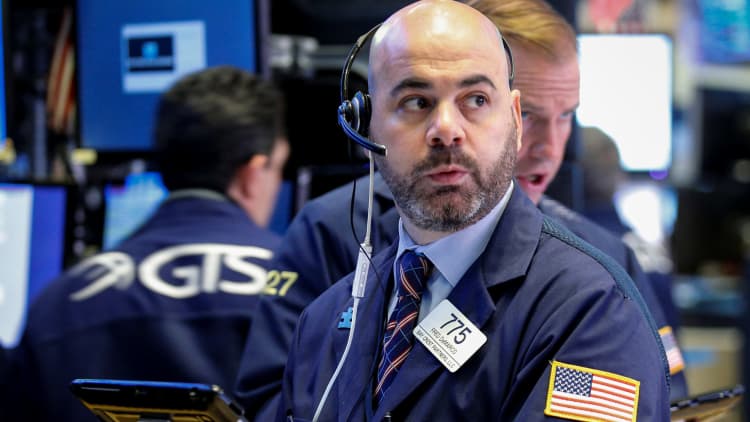The Dow Jones industrial average fell more than 1,500 points on Friday afternoon — but that didn't trigger any trading halts.
That's because the stock market as measured by the broader S&P 500 index has to fall even more to trigger those halts. The first such circuit breaker kicks in when the falls at least 7 percent, what's called level 1. The S&P was down about 3 percent in afternoon trading on Monday.
To put the day's move in a broader context, the point drop in the Dow (which is a basket of 30 large U.S. company stocks versus the 500 or so stocks in the S&P) was just 4 percent. The Dow fell 665 points on Friday. The last time it closed down 500 or more points was after Britain voted to leave the European Union, June 24, 2016, when it fell 610 points, then a 3.4 percent move.
The Dow's biggest closing drop in points in a single day was 777.68 on Sept. 29, 2008, in the midst of the financial crisis. It was a 6.89 percent fall back then.
Still, the Dow has given back nearly all of its gains for January.

For the stock market to halt on Monday, to allow fearful investors and frenzied traders (and computers) a chance to cool off, the S&P would have to drop to around 2,568, according to this notice from Nasdaq that is updated daily. And that kind of halt would have lasted for 15 minutes.
The NYSE, Nasdaq and other exchanges put these circuit breakers in place after the October 1987 crash and a subsequent one in 1989.
The first level gets triggered if the S&P falls 7 percent between the opening of trading hours at 9:30 a.m. in New York and 3:25 p.m. (or 12:25 p.m. on days when the stock market has a scheduled early close).
The next trigger, level 2, kicks in when the index falls 13 percent, another 15-minute halt. To get there on Monday, the S&P would have to fall to 2,403.
Level 1 and 2 halts can only happen once per trading day. If the S&P fell 20 percent (that would be to 2,209 as of Friday), trading would stop for the rest of the day.
That would be a "Black Monday"-sized drop, which happened on Oct. 19, 1987.

